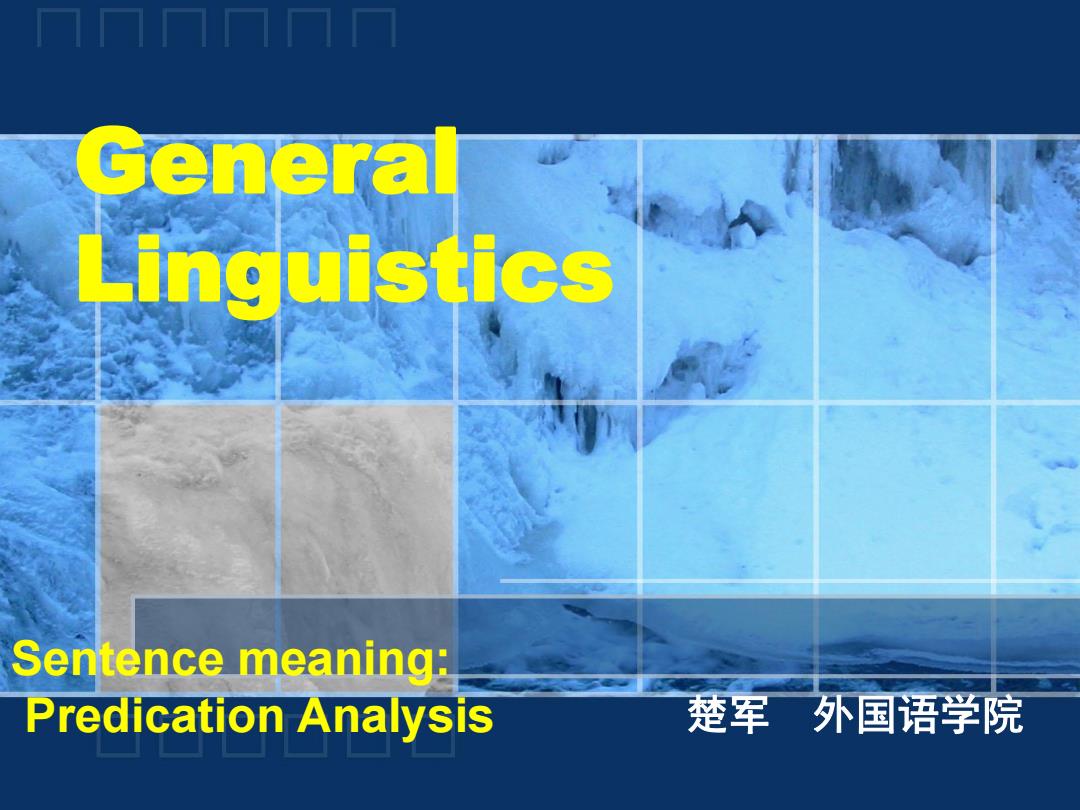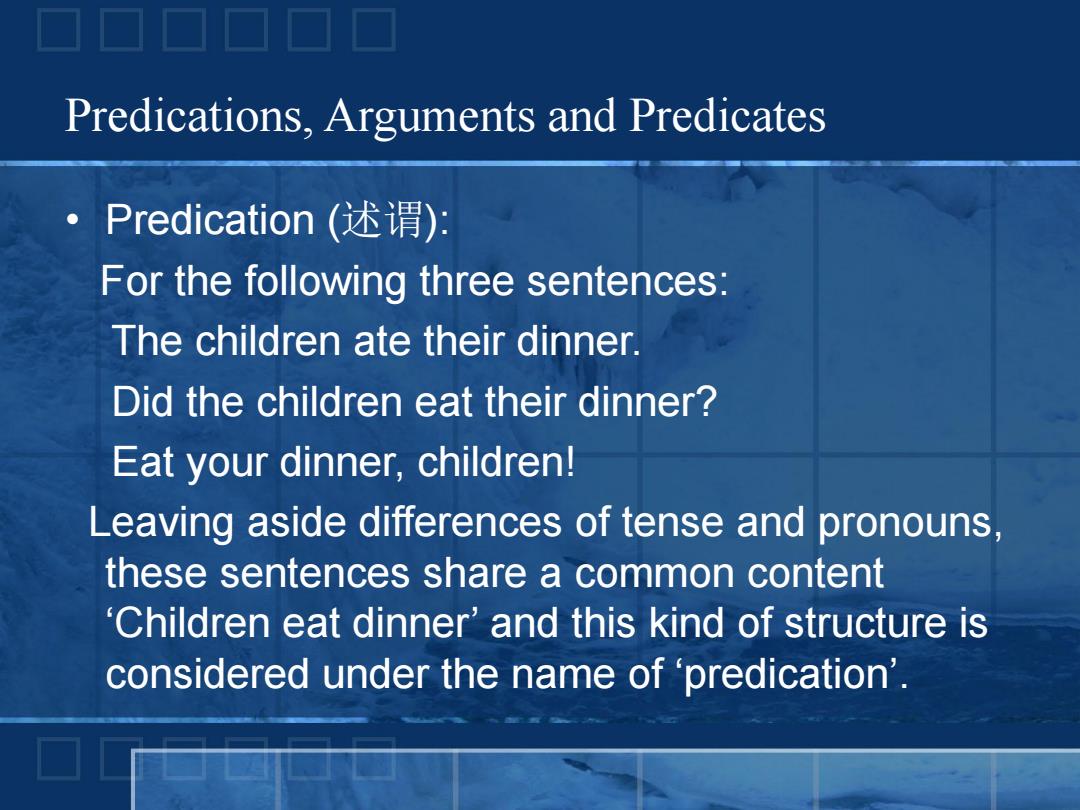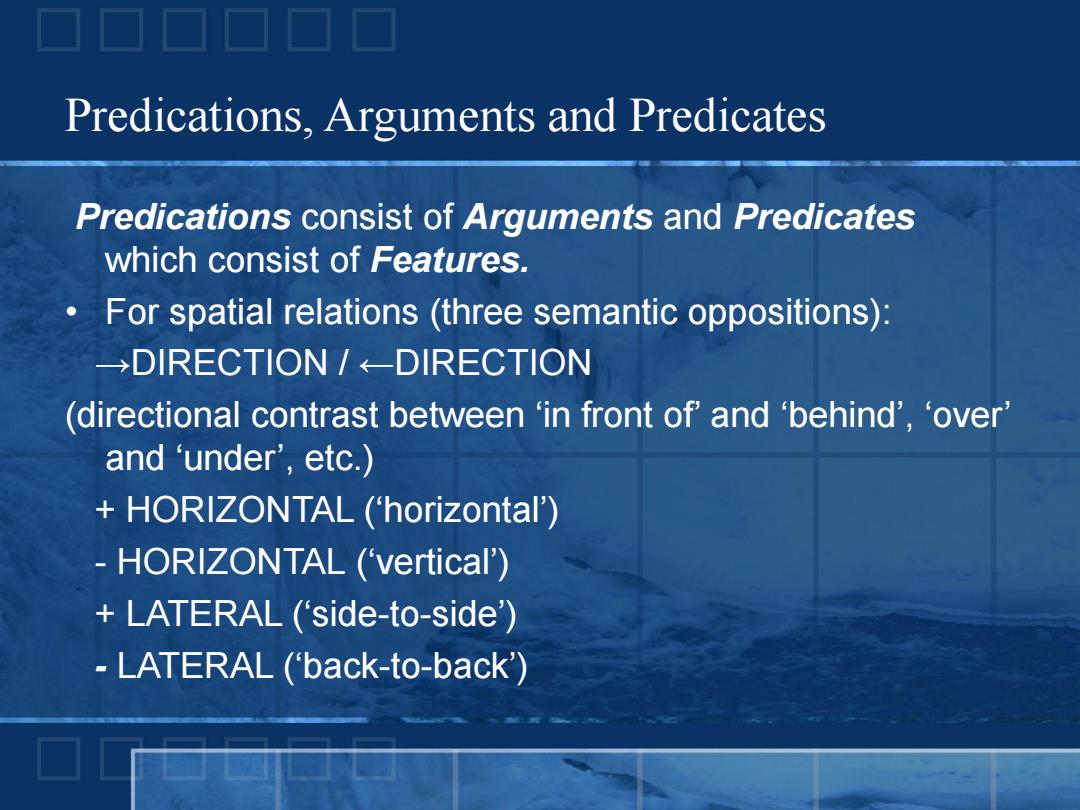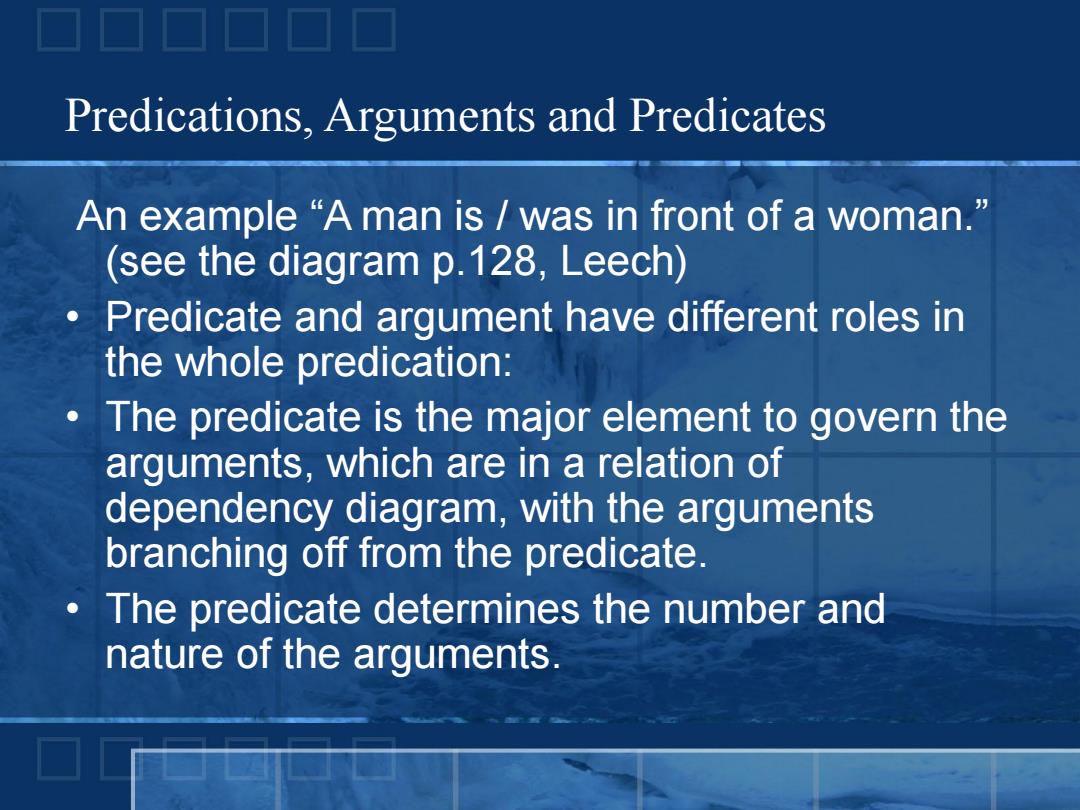
General Linguistics Sentence meaning: Predication Analysis 楚军外国语学院
Sentence meaning: Predication Analysis 楚军 外国语学院 General Linguistics

The Semantic Structure of Sentences How about this hypothesis? --the meaning of a sentence is merely the sum of the meanings of the words and other constituents which compose it. Without 'predication analysis',we could not tell the difference of meaning between: My wife has a new dog. My new wife has a dog. My new dog has a wife. (All these would have to be regarded as synonymous with the help of 'CA'.)
The Semantic Structure of Sentences How about this hypothesis? --the meaning of a sentence is merely the sum of the meanings of the words and other constituents which compose it. Without ‘predication analysis’ , we could not tell the difference of meaning between: My wife has a new dog. My new wife has a dog. My new dog has a wife. (All these would have to be regarded as synonymous with the help of ‘CA’.)

Predications,Arguments and Predicates Predication(述谓): For the following three sentences: The children ate their dinner. Did the children eat their dinner? Eat your dinner,children! Leaving aside differences of tense and pronouns, these sentences share a common content Children eat dinner'and this kind of structure is considered under the name of 'predication
Predications, Arguments and Predicates • Predication (述谓): For the following three sentences: The children ate their dinner. Did the children eat their dinner? Eat your dinner, children! Leaving aside differences of tense and pronouns, these sentences share a common content ‘Children eat dinner’ and this kind of structure is considered under the name of ‘predication’

Predications,Arguments and Predicates Predications consist of Arguments and Predicates which consist of Features. For spatial relations (three semantic oppositions): →DIRECTION/←-DIRECTION (directional contrast between 'in front of'and 'behind','over' and 'under',etc.) HORIZONTAL ('horizontal') HORIZONTAL ('vertical') LATERAL ('side-to-side') LATERAL (back-to-back')
Predications consist of Arguments and Predicates which consist of Features. • For spatial relations (three semantic oppositions): →DIRECTION / ←DIRECTION (directional contrast between ‘in front of’ and ‘behind’ , ‘over’ and ‘under’ , etc.) + HORIZONTAL (‘horizontal’) - HORIZONTAL (‘vertical’) + LATERAL (‘side-to-side’) - LATERAL (‘back-to-back’) Predications, Arguments and Predicates

Predications,Arguments and Predicates An example "A man is was in front of a woman. (see the diagram p.128,Leech) Predicate and argument have different roles in the whole predication: The predicate is the major element to govern the arguments,which are in a relation of dependency diagram,with the arguments branching off from the predicate. The predicate determines the number and nature of the arguments
An example “A man is / was in front of a woman.” (see the diagram p.128, Leech) • Predicate and argument have different roles in the whole predication: • The predicate is the major element to govern the arguments, which are in a relation of dependency diagram, with the arguments branching off from the predicate. • The predicate determines the number and nature of the arguments. Predications, Arguments and Predicates